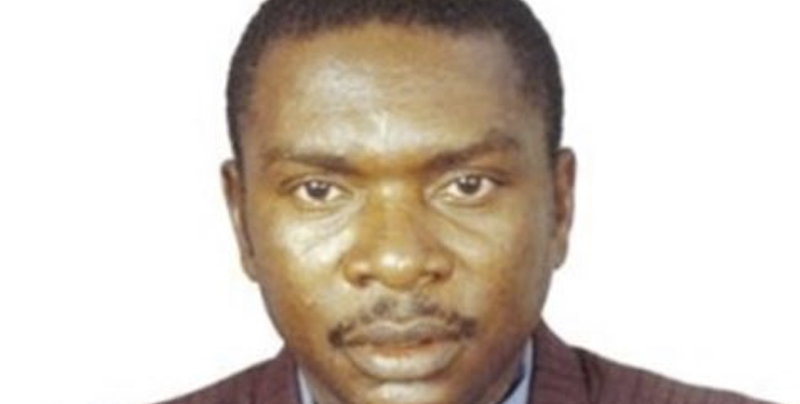For over twenty years, the Rwandan authorities have been trying to track down one of the main perpetrators of the genocide that took place in the country in 1994, Protais Mpiranya. Mpiranya was commander of the presidential guard: at the end of the civil war he had fled and there was no news of him. The search ended only a few weeks ago, when the tomb where he was buried under the false name of Sambao Ndume was discovered in Harare, Zimbabwe.
After the discovery of the tomb, the identity of the buried person had been verified, and it was discovered that he was Mpiranya and that he had died in 2006 from complications due to tuberculosis from which he suffered. Mpiranya was accused of genocide, war crimes and crimes against humanity and was among the most wanted fugitives in the world, the most prominent of the 93 indicted by the International Tribunal created by the UN in 1994 to establish responsibility for the genocide in Rwanda.
The cause of the genocide was the shooting down of the plane carrying the president of Rwanda, Juvénal Habyarimana, and the president of Burundi, Cyprien Ntaryamira, both of Hutu ethnicity, which took place on April 6, 1994. After that episode, hatred between Hutus, “moderate” Hutus and the Tutsi minority it had led to the massacre of at least 800 thousand people, mainly to the detriment of the Tutsis but also of many “moderate” Hutus. Mpiranya, as head of the presidential guard, had given his men lists of people to kill, including their family members, and had played a central role in the atrocities that followed. The research team that uncovered Mpiranya’s death had been organized to resolve cases that remained unsolved after the International Tribunal that had conducted the research until then was closed in 2015.
For a long time the leader of the group, Serge Brammertz, and his collaborators had been convinced that Mpiranya was still alive, and had followed various unpromising leads or testimonies that had led them to different countries of the African continent. “His family and people close to him have hidden Mpiranya’s death and his presence in Harare for years” he said. said Brammertz talking to the Guardian. “The dossier on him was full of information relating to his affairs in various countries, and he seemed to be quite active. My predecessors had concentrated on those tracks, and perhaps I did the same at the beginning ».
From 2015 onwards, the group had reviewed the entire investigation into Mpiranya, double-checking the data, interviewing all the witnesses again, sifting through every hypothesis and questioning their beliefs. They started from the only certain fact, that is, that Mpiranya was in Congo in 2002, and from there they tried to reconstruct every detail of his life, trying to think like him and hypothesize his actions. Despite efforts, the research had been slow and had not made significant progress, at least until a few months ago.
There is little information on this point of the investigation. It is known that in September 2021 the research group had come into possession of a computer, recovered in an unidentified European country. Inside the computer they had found hundreds of photographs and several emails which according to the information in the possession of the investigators seemed to refer to Mpiranya and his family. Some photographs dating back to 2006 depicted a funeral. There were also photos of the coffin and of the body, which resembled Mpiranya.
In the computer, the investigators had also found a hand-drawn drawing of a tombstone, which probably served as a model for the tomb: it was the decisive detail, since the tombstone was dedicated to a certain Sambao Ndume, born on the same day as Mpiranya. on May 30, 1956. In the cemetery of Grenville, on the morning of February 7, the group had identified the grave, almost invisible in the tall grass. “I remember the moment when a colleague of mine called us saying ‘found it!'” Said one of the team members. “We stood there looking at it, it was just as we expected it to be. All the hard work, the ups and downs, had led up to that moment. “
Protais Mpiranya who was involved in the Rwandan genocide has finally been found dead in Zimbabwe under the name Sambao Ndume by UN investigators using DNA.
He was one of the most wanted criminals with a US$5 Million reward pic.twitter.com/LcbzHZZxpD
– Katsomedia24 (@ katsomedia24) May 13, 2022
The Zimbabwean authorities then granted the group permission to exhume Mpiranya’s body for investigations. On April 27, investigators, a UN coroner and three local investigators went to the grave to take a sample from the body. The expedition was accompanied by 20 police officers, who attracted a lot of attention from the residents, gathered in a small crowd around the cemetery.
The research work of Brammertz and his collaborators is not yet finished, they are looking for five other accused of genocide. According to Brammertz, the discovery of Mpiranya could increase the pressure on the governments of the countries that have hitherto covered their tracks. “Our goal is to arrest the fugitives,” said Brammertz. “But they also have to account for their responsibilities, one way or another […]. The fact that this person is dead means that he can no longer do harm, and that he is not living his life as a fugitive, somewhere, while his lives are trying to rebuild theirs. “
– Read also: The day the genocide in Rwanda began
–


